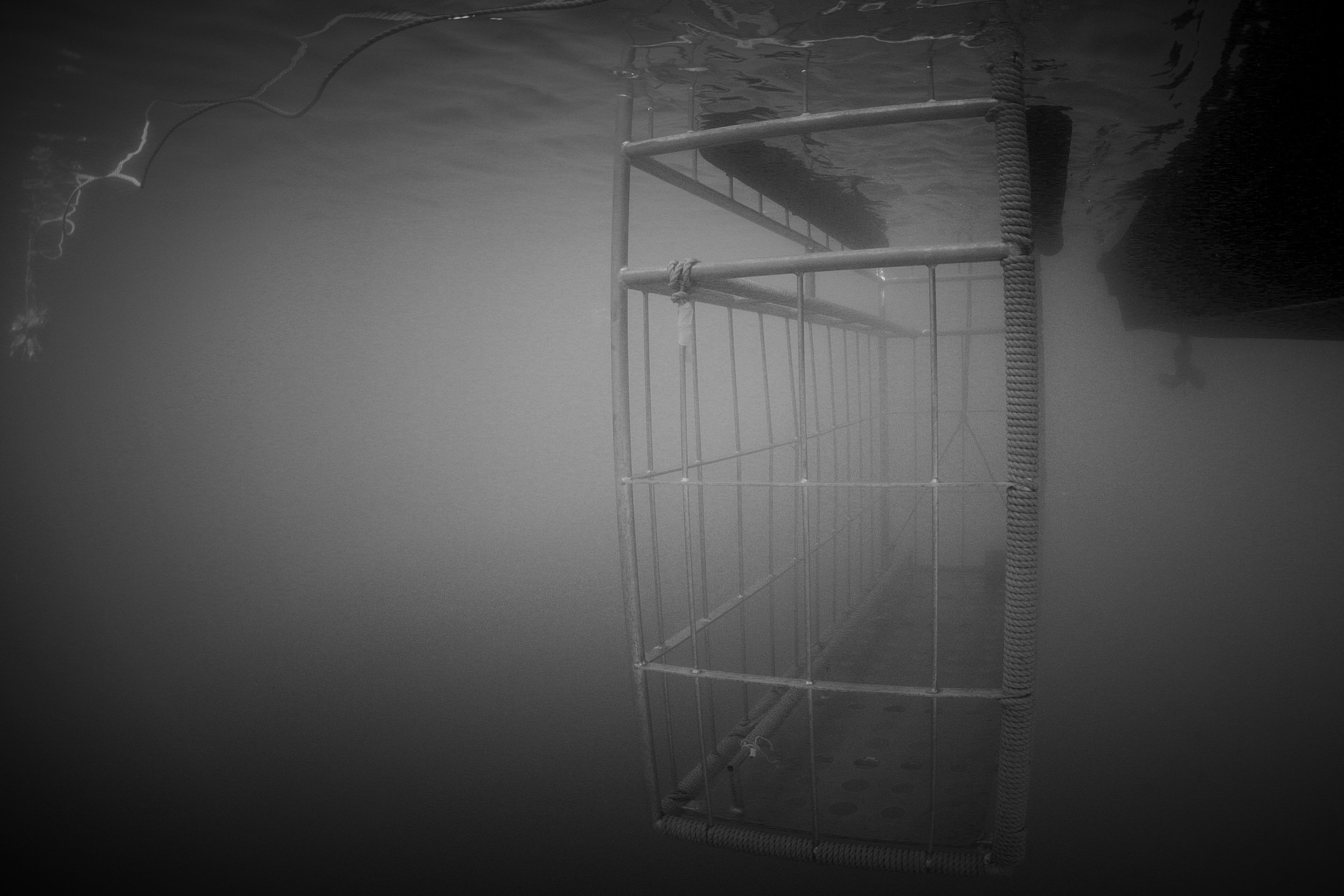Evidence Of Cascading Ecosystem Following The Loss Of White Sharks From Seal Island
Empty shark cage, Seal Island, False Bay, South Africa © Dan Callister/Penguins & Sharks
Historically, white sharks occupied the top of the food chain at Seal Island, preying on Cape fur seals and both competing with and feeding on sevengill sharks. Seals primarily preyed on schooling fishes, while sevengill sharks primarily preyed on benthic sharks. Following the decline and eventual disappearance of white sharks from False Bay, both seals and sevengill sharks have increased in relative abundance, coinciding with declines in small fish that seals feed on and smaller sharks that sevengills prey upon.
New research by Neil Hammerschlag, Yakira B Herskowitz, Chris & Monique Fallows & Thiago B A Couto can be found here

